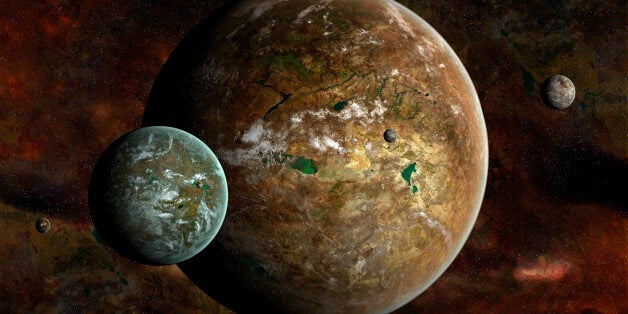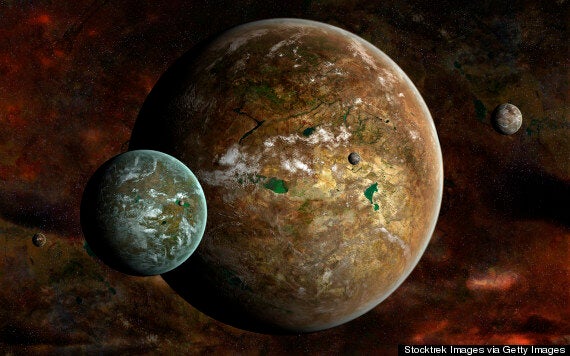
Astronomers form Cornell University think they have detected the first moon outside our solar system - and it's rather odd.
Firstly, it's pretty big, around half the size of Earth. Secondly, it orbits about 20 million kilometres from its planet.
To put that in perspective, our Moon is 384,400 km away.

Stock photo, we have no idea what they really look like
The planet the moon is orbiting is a gas giant but strangely neither it or its moon appear to be orbiting a star suggesting at some point they were ejected from a star-system.
This raises the possibility that the moon is in fact a smaller planet that was dragged out of a solar system by the larger gas giant - a bit like if one day Jupiter went rogue and flung Earth in to the freezing depths of space.
There is a caveat to all this - the planet-moon scenario is one of two being mooted. The other is that the two objects are a small or failed star orbited by a Neptune-mass planet.
The uncertainty arises due to the method used to detect them.
A process called gravitational microlensing detects the changes in light given off from distant stars due to the focusing effect of an objects gravity when it passes in front.
David Bennett, the main author, wrote: "The data are well fit by this exomoon model, but an alternate star+planet model fits the data almost as well.
"The argument for an exomoon hinges on the system being relatively close to the Sun."
